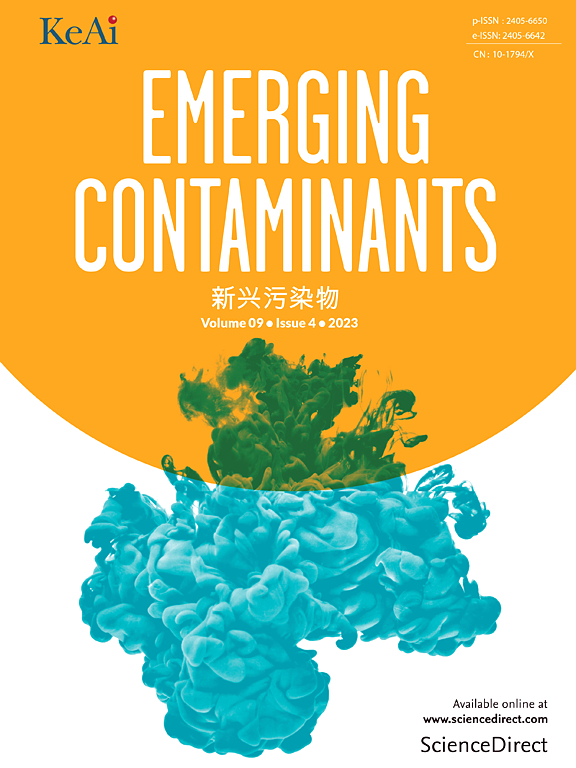Brake wear particles from various temperatures: emission characteristics, generation processes and evolutions
IF 6.9
2区 环境科学与生态学
Q1 ENVIRONMENTAL SCIENCES
引用次数: 0
Abstract
Brake particle emissions are receiving global attention and are a major focus in the Euro 7 and China 7 regulations. Based on a 1/5 scale brake dynamometer, this study investigated the brake particle emissions from NAO-cast iron brake assemblies under various temperatures (350 °C, 450 °C, and 550 °C). Particles with the size of 1∼10 μm (PL1) were analyzed. In low temperature single brakes, PL1 emissions exhibited a sharp initial increase followed by a gradual decline due to the absence and subsequent formation of secondary plateaus, where the contribution of particles at 8–10 μm decreased as braking progressed. Under high IBT (initial brake temperature) conditions, multiple PL1 spikes occurred within a single brake, driven by the dynamic formation and rupture of secondary plateaus. The rupture was influenced by reduced adhesive strength and thermal degradation-induced gases. The relative standard deviation of average PL1 concentrations stabilized at 7.90 %–16.38 % under thermally stable conditions, yet the average PL1 concentrations varied with thermally stable temperatures, leading to different emissions even under identical braking conditions. Increasing IBT from 25 °C to 100 °C amplified PL1 spikes by 2–10 times due to weakened mechanical strength and reduced actual contact area. Additionally, high-temperature pretreatment further elevated PL1 emissions by 2–5 times, promoting abrasive wear and increasing the contribution of particles at 5–10 μm. These findings provided new insight into the brake particle emission characteristics under continuous high-temperature brakes and the underlying reasons.
刹车磨损颗粒来自不同温度:排放特性,产生过程和演变
刹车微粒排放正受到全球的关注,也是欧七和中国七规定的主要关注点。基于1/5比例的制动器测力仪,本研究调查了不同温度(350°C, 450°C和550°C)下nao铸铁制动器组件的制动颗粒排放。粒径为1 ~ 10 μm (PL1)的颗粒进行了分析。在低温单制动条件下,由于次级平台的缺失和后续的形成,PL1排放量呈现出初始急剧增加后逐渐下降的趋势,其中8-10 μm颗粒的贡献随着制动的进行而下降。在高IBT(初始制动温度)条件下,在二次高原的动态形成和破裂的驱动下,在一次制动中出现多个PL1峰值。断裂受粘接强度降低和热降解气体的影响。在热稳定条件下,平均PL1浓度的相对标准偏差稳定在7.90% ~ 16.38%之间,但平均PL1浓度随热稳定温度的变化而变化,导致即使在相同的制动条件下也会产生不同的排放。将IBT从25°C增加到100°C,由于机械强度减弱和实际接触面积减少,PL1尖峰放大了2-10倍。此外,高温预处理进一步提高了PL1排放量2-5倍,促进了磨粒磨损,增加了5-10 μm颗粒的贡献。这些研究结果为研究连续高温刹车下的刹车颗粒排放特性及其原因提供了新的思路。
本文章由计算机程序翻译,如有差异,请以英文原文为准。
求助全文
约1分钟内获得全文
求助全文
来源期刊

Emerging Contaminants
Medicine-Public Health, Environmental and Occupational Health
CiteScore
10.00
自引率
6.70%
发文量
35
审稿时长
44 days
期刊介绍:
Emerging Contaminants is an outlet for world-leading research addressing problems associated with environmental contamination caused by emerging contaminants and their solutions. Emerging contaminants are defined as chemicals that are not currently (or have been only recently) regulated and about which there exist concerns regarding their impact on human or ecological health. Examples of emerging contaminants include disinfection by-products, pharmaceutical and personal care products, persistent organic chemicals, and mercury etc. as well as their degradation products. We encourage papers addressing science that facilitates greater understanding of the nature, extent, and impacts of the presence of emerging contaminants in the environment; technology that exploits original principles to reduce and control their environmental presence; as well as the development, implementation and efficacy of national and international policies to protect human health and the environment from emerging contaminants.
 求助内容:
求助内容: 应助结果提醒方式:
应助结果提醒方式:


